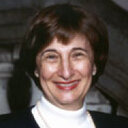Low thiamine diphosphate levels in brains of patients with frontal lobe degeneration of the non-Alzheimer's type.
Atslēgvārdi
Abstrakts
We compared the thiamine and thiamine phosphate contents in the frontal, temporal, parietal, and occipital cortex of six patients with frontal lobe degeneration of the non-Alzheimer's type (FNAD) or frontotemporal dementia with five age-, postmortem delay-, and agonal status-matched control subjects. Our results reveal a 40-50% decrease in thiamine diphosphate (TDP) in the cortex of FNAD patients, whereas thiamine monophosphate was increased 49-119%. TDP synthesizing and hydrolyzing enzymes were unaffected. The activity of citrate synthase, a mitochondrial marker enzyme, was decreased in the frontal cortex of patients with FNAD, but no correlation with TDP content was found. These results suggest that decreased contents of TDP, which is essentially mitochondrial, is a specific feature of FNAD. As TDP is an essential cofactor for oxidative metabolism and neurotransmitter synthesis, and because low thiamine status (compared with other species) is a constant feature in humans, a nearly 50% decrease in cortical TDP content may contribute significantly to the clinical symptoms observed in FNAD. This study also provides a basis for a trial of thiamine, to improve the cognitive status of the patients.


